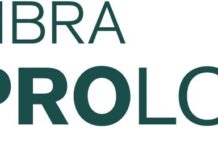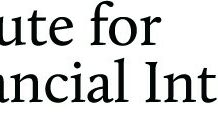The 6th Annual P-Fin Index shows that those with low financial literacy are more likely to have financial challenges, like difficulty making ends meet and struggling with debt.
NEW YORK, April 12, 2022 /PRNewswire-HISPANIC PR WIRE/ — More U.S. adults have a very low level of financial literacy than in any year since 2017, the first year of the Personal Finance (P-Fin) Index, a joint initiative of the TIAA Institute and the Global Financial Literacy Excellence Center (GFLEC) at the George Washington University School of Business.

The P-Fin Index is an annual barometer of financial literacy based on a 28-question survey. Key findings this year include:
- Adults correctly answered only one-half of the questions, on average, a troubling figure that has remained stagnant over time.
- More adults (23%) than any year of the survey could not correctly answer more than 7 of the 28 questions.
- Comprehending risk remains the area where functional knowledge tends to be lowest; only around one-third of these questions were answered correctly.
The 2022 index was fielded in January and includes more than 3,500 responses from four race and ethnic groups and five generations. Asian Americans were oversampled for the first time with the 2022 P-Fin Index, along with Black and Hispanic Americans. The novel data shows that financial literacy levels among Asian Americans and Whites tend to be equal, with both groups correctly answering about 55% of the questions. Black and Hispanic Americans each correctly answered about 35%.
“While this year’s Personal Finance Index is concerning, it must be noted that systemic factors and issues keep the economic playing field uneven for far too many Americans,” said TIAA Institute Senior Economist Paul Yakoboski. “As we work to improve financial literacy for all, we know that there are also demographic differences that can help or hinder those looking to achieve financial wellness, such as age, overall education levels and income distributions.”
Examining financial literacy across ages shows that it tends to be particularly low among those in early adulthood. Gen Z and Gen Y correctly answered only about 45% of the survey questions.
“The consistently low financial literacy levels among U.S. adults and, particularly, among the most vulnerable demographic subgroups is troubling,” said Annamaria Lusardi, University Professor at GW and GFLEC’s Academic Director. “These findings are a call to action! With financial literacy month underway, I want to invite everyone to join us in the effort to improve financial literacy and financial wellbeing for all.”
The P-Fin Index underscores the importance of financial literacy for financial well-being, showing that people with a very low level (compared to those with a very high level) are:
- 6 times more likely to have difficulty making ends meet.
- 3 times more likely to be debt constrained.
- 3 times more likely to be unable to cope with a $2,000 financial shock.
- 4 times more likely to spend more than 10 hours a week on issues related to personal finances.
Financial literacy matters even controlling for other factors, like income. In sum, while not a cure-all, increased financial literacy can lead to improved financial practices that benefit even those with modest or limited resources.
The full report can be found here.
About the TIAA Institute
The TIAA Institute helps advance the ways individuals and institutions plan for financial security and organizational effectiveness. The institute conducts in-depth research, provides access to a network of thought leaders, and enables those it serves to anticipate trends, plan future strategies and maximize opportunities for success. For more information about the TIAA Institute, visit www.tiaainstitute.org.
About TIAA
TIAA is a leading provider of secure retirements and outcome-focused investment solutions to millions of people and thousands of institutions. It is the #1 not-for-profit retirement market provider,[1] paid more than $3.6 billion to retired clients in 2020 and has $1.4 trillion in assets under management (as of 12/31/2021).[2]
About GFLEC
The Global Financial Literacy Excellence Center (GFLEC) is dedicated to advancing research and solutions that open the door to universal financial literacy. In working toward that mission, GFLEC has positioned itself as the world’s leading incubator for financial literacy research, policy, and solutions.
GFLEC launched in 2011 at the George Washington University School of Business in Washington, D.C. Since then, it has pioneered breakthrough tools to measure financial literacy, developed and advised on educational programs, and crafted policy guidelines aimed at advancing financial knowledge in the United States and around the world. For more information on GFLEC, visit www.gflec.org.
[1] As of Dec. 31, 2020. Based on data in PLANSPONSOR’s 403(b) Market Survey, which published in August 2021.
[2] As of December 31, 2021 assets under management across Nuveen Investments affiliates and TIAA investment management teams are $1,375 trillion.

Logo- https://mma.prnewswire.com/media/1142120/GFLEC_Logo.jpg
Logo- https://mma.prnewswire.com/media/1142121/TIAA_Logo.jpg
SOURCE TIAA Institute







